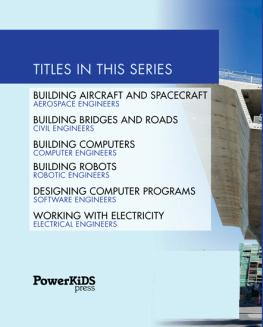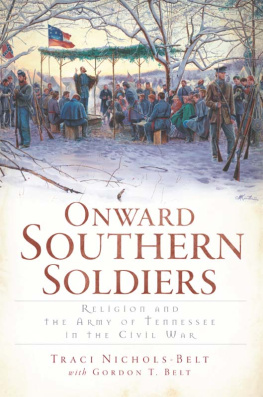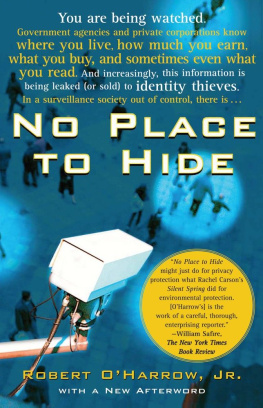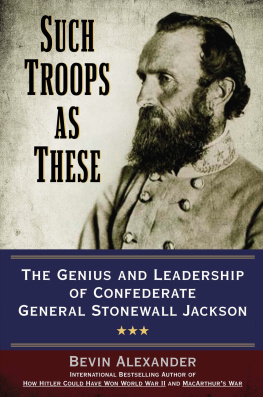Engineering Victory
Johns Hopkins Studies in the History of Technology
MERRITT ROE SMITH, SERIES EDITOR
ENGINEERING VICTORY
How Technology Won the Civil War

THOMAS F. ARMY, JR.

2016 Johns Hopkins University Press
All rights reserved. Published 2016
Printed in the United States of America on acid-free paper
2 4 6 8 9 7 5 3 1
Johns Hopkins University Press
2715 North Charles Street
Baltimore, Maryland 21218-4363
www.press.jhu.edu
Library of Congress Cataloging-in-Publication Data
Army, Thomas F., Jr., 1954 author.
Engineering victory : how technology won the Civil War /
Thomas F. Army, Jr.
pages cm. (Johns Hopkins studies in the history of technology)
Includes bibliographical references and index.
ISBN 978-1-4214-1937-4 (hardcover : alk. paper) ISBN 978-1-4214-1938-1
(electronic) ISBN 1-4214-1937-8 (hardcover : alk. paper) ISBN 1-4214-1938-6 (electronic) 1. United StatesHistoryCivil War, 18611865
Technology. 2. United StatesHistoryCivil War, 18611865
Campaigns. I. Title.
E468.9.A67 2016
973.7'3dc23 2015026992
A catalog record for this book is available from the British Library.
Special discounts are available for bulk purchases of this book.
For more information, please contact Special Sales at 410-516-6936 or
.
Johns Hopkins University Press uses environmentally friendly book materials, including recycled text paper that is composed of at least 30 percent post-consumer waste, whenever possible.
To Virginia, because without your love and
support none of this would have been possible
Contents
Maps
Acknowledgments
The word acknowledgment strikes me as meaning a cursory nod to those who played a supporting role in the production of this book. The word suggests the obligatory and dutiful recognition of those who have guided and assisted me during the oftentimes lonely and always demanding process of writing this manuscript. To me, the word falls far short of the mark. Instead, the heading should read: Those who had my back, or Without the following people Im not sure I would have started this project, let alone finished it. Constructive comments, encouraging words, small kindnesses, and quiet support from mentors, colleagues, friends, and family truly meant more to me than acknowledgment conveys. Throughout the seven years I worked on this project, the unwavering support I received from many remarkable men and women held up both my enthusiasm and my emotions better than any trestle or pontoon bridge sustained the weight of crossing Union or Confederate armies. Countless people went out of their way to offer me words of encouragement or exercised the patience of Job as they listened to me revel in stories about winged dams on the Red River and corduroy roads and pontoon bridges on the Virginia peninsula. To all of you I offer my undying gratitude and most sincere thanks.
This project began in 2002 when I started to wonder aloud about the effects of engineering on the outcome of the Civil War. Stymied by my own efforts to locate resources on the subject, I mentioned my interests and frustrations to friend and Licensed Battlefield Guide at Gettysburg National Military Park, Phil Cole. He had just embarked on a project of his own, and so we spent a fair amount of time standing atop Little Round Top discussing our respective interests. Phil offered to help me in any way possible, suggesting where to look for archival information and encouraging me to follow the breadcrumbs. I did. His practical advice, wisdom, and guidance helped jump-start my journey into the world of Civil War bridge builders.
The research for this book continued with my dissertation at the University of Massachusetts, Amherst, where my advisor, Heather Cox Richardson, helped to sharpen my focus. As my dissertation started to take shape, she read chapter drafts and helped structure and develop my writing. I am thankful for her teaching and guidance.
Leonard L. Richards, professor emeritus of history at UMass, also frequently offered cheerful and smart advice about the structure of my dissertation and championed my topic enthusiastically. I am also deeply indebted to Merritt Roe Smith of the Massachusetts Institute of Technology for agreeing not only to serve on my committee but to shepherd me through the process of converting my dissertation into a manuscript for publication. His knowledge of American technological developments in the nineteenth century and their intersection with the Civil War is remarkable. He was most generous in sharing his knowledge and time with me. Roe Smith also connected me with Senior Editor Robert J. Brugger of Johns Hopkins University Press, who guided me through the process of revising and editing my manuscript. For poring over these pages and offering wisdom and sound advice, Im grateful to Linda Strange. Spencer Tucker, retired chair of military history at the Virginia Military Institute, was also gracious in answering my emails and in reading several chapters of the book.
Special thanks go to the Reverend Doctor Bennett A. Brockman, a most remarkable scholar and professor of English Literature, Episcopal priest, and good friend, who warmly agreed to read the entire manuscript. Ben offered sound advice, corrected my grammar, and suggested ways to strengthen the manuscript. I am deeply indebted to him for all his assistance.
I am thankful to the many park service people and archivists who generously offered me their time and talent. Park rangers and historians at the Vicksburg, Chickamauga, Chattanooga, and Perryville battlefields were enormously helpful in pointing out important landscape features, especially those that required the attention of Union and Confederate engineers. Several folks with local knowledge also provided directions to the spot where Lees army crossed the Potomac River after the Battle of Gettysburg, and to the remains of Grants Canal in northern Louisiana near the Mississippi River. In particular, I want to thank the people at the Flowerdew Hundred Plantation for giving my daughter Priscilla and me a personal tour of the spot where Grants army crossed the James River in June 1864.
To the archivists and librarians at the National Archives in Washington, DC, the Virginia and New York State libraries, the Museum of the Confederacy in Richmond, the Connecticut Historical Society in Hartford, the Civil War Museum in Atlanta, and the National Park Service Library at Gettysburg, I extend my sincere appreciation.
I would be remiss if I failed to mention Professor Willard M. Wallace of Wesleyan University. He was a role model to me, and one reason I wanted to become a history teacher. He was a quintessential storyteller, scholar, and gentleman. He died in June 2000, about the time I started thinking about Civil War engineering. This book is dedicated, in part, to his memory. I owe a special debt of gratitude to Dr. Richard Griffith, one of the kindest and gentlest souls I have had the privilege to know. Richard and I spent many an evening together enjoying a meal and discussing a range of topics, including our shared interest in the Civil War. A relative of Robert E. Lee, an anesthesiologist, and a PhD in engineering, Richard found my ideas about Civil War engineering exciting and fresh, and his enthusiasm meant a great deal to me. In his spare time, Richard is also a professional videographer, and he graciously offered to assist me in generating a series of maps for my book. Once completed, the maps were given to Chris Robinson, who corrected several of my omissions and made adjustments to the style. To both I offer sincere appreciation.
Next page







